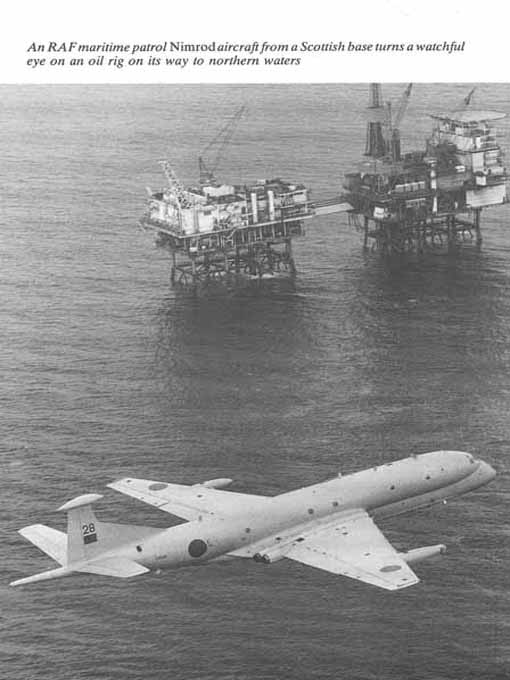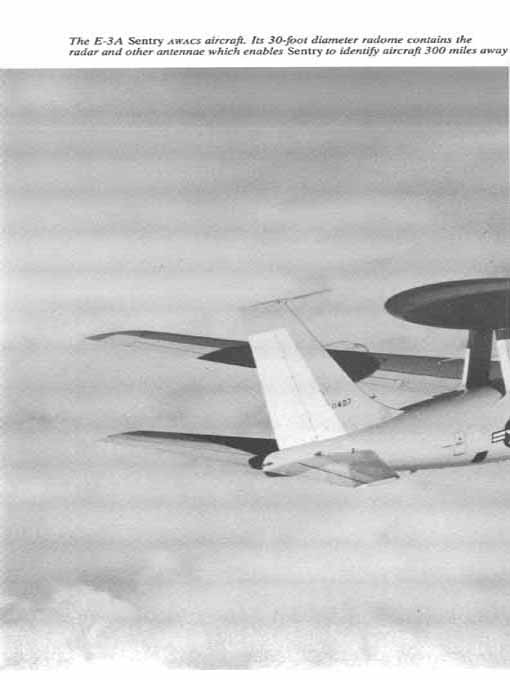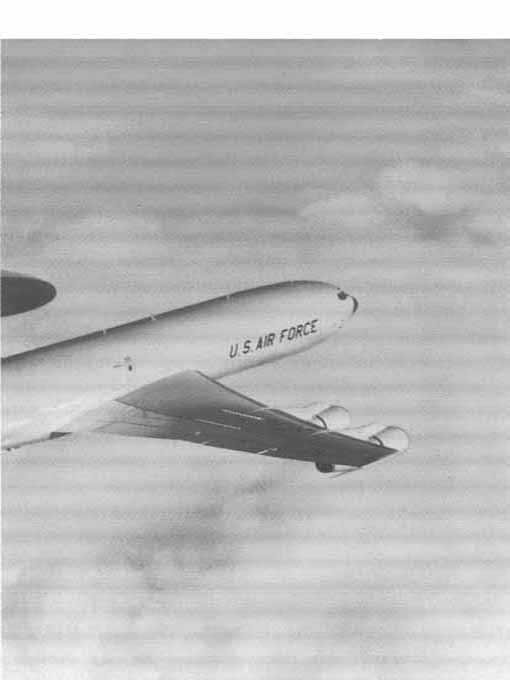The Third World War - The Untold Story (14 page)
Read The Third World War - The Untold Story Online
Authors: Sir John Hackett
Tags: #Alternative History

For some years the Soviet Navy had been using Conakry in Guinea, West Africa, as a turn-round base for their long-range
Bear
maritime reconnaissance aircraft and, occasionally also,
Backfire
bombers and supporting air tankers. In this way their aircraft could sweep down the length of the North Atlantic one day and up again the next. All of this was well observed by the US and British surveillance systems and it was naive if the Soviet Navy expected aircraft at Conakry to be unmolested in war. Nevertheless, on the evening of 4 August 1985 there were four
Bears,
two
Backfires
and a tanker on the airfield and the USAF responded promptly.
At midnight a mission of four B-52D bombers from the California Wing at March Air Force base took off from their war deployment base in Florida for a direct attack with 120 tons of high-explosive bombs under the command of Major Ed Lodge in the lead aircraft. They started their bomb runs to the target nine hours later from a clear blue sky. There was no fighter opposition and the Soviet SAM, which only started coming up as the bombing neared its end, were easily confused by the B-52s’ ECM. Runways, control facilities, hangars and fuel installations were taken as precision targets and systematically destroyed as the B-52s ploughed their furrows 10,000 metres up in the sky. Their success was total and the airfield was put out of use to such a degree that the Soviet Navy made no attempt to use it again.
Some of the wiser leaders in Africa saw the moral. Client states or surrogates would do well to ensure that their patron countries had the power and the reach to protect them from the dangers to which politics and geography might expose them. Guinea had painfully failed to foresee these risks.
Back at their base in Florida, as the citations for medals for the bomber crews were read out, the media were electrified to discover that the mission commander’s full name was Edwina Tinkle Lodge. She was among the first of a small group of young women who graduated from the US Air Force Academy and was accepted for training in the Military Airlift Command in the 1970s, where she had excelled as a pilot and aircraft captain. With a little help from her congressman, who was out for the women’s vote, she had been transferred to the B-52 Bomber Wing at March Air Force base which trained for a wide range of conventional bombing tasks. The Conakry raid was just one of them.
The example of the USAF was not generally followed in other Allied air forces even though there was an all-round shortage of experienced pilots stemming from the lean recruiting years of the 1970s. The critical difficulty lay in the restrictions placed on flying hours by governments for economic reasons. In due course corrective action had to be taken and in the RAF, for example, measures to keep experienced pilots longer on front-line duties helped to offset the dilution of experience which was exacerbated in the early 1980s by the need to cream off the best of the ‘fast jet-set’ to man the
Tornado
as it came into service. An important step in tackling that problem was when the British Government and its Treasury advisers were at last shaken out of the wrong-headed notion that there was an easy money-saving Midas touch in cutting back on flying and training. But it took a costly accident rate to persuade them of the folly of keeping an air force out of the air. A sustained drive was mounted to improve reliability of all equipment and to streamline the flow of logistics to the flight lines in the forward areas - wherever the fortunes of war might decide that they would be. This campaign paid off handsomely when the war came. Spinney’s report turned out to have had a very long tail.
What was done in the RAF was characteristic of the sort of effort and improvement programmes mounted by all the Allied air forces. The benefit of such measures came through steadily to the front line and evidence of this showed up in the rigorous evaluations under simulated war conditions imposed by independent multi-national NATO inspection teams. But certain innovations in the use of civil resources in Britain were of a rather special nature and deserve mention because they played a positive part in preserving and exploiting the strategic importance of the UK base within the Alliance.
In this connection it is worth recalling that in 1979 the United States Strategic Air Command (SAC) first publicly announced the intention to designate eighty B-52Ds in support of NATO forces. The bomb bay of the B-52Ds had been enlarged in 1967 to carry up to 70,000 lb of conventional free-fall bombs and in 1977 the aircraft were given further structural and avionic improvements to extend their operational life and to enhance their conventional bombing capability. In September 1978, B-52s from 7 Bomber Wing at Cars-well, Texas, participated for the first time in the NATO exercise ‘Cold Fire’. Thereafter, they trained more and more frequently in European conditions.
On some occasions in their training they flew directly across the Atlantic, simulated attacks on ‘hostile’ forces in Western Europe and returned to their bases in Texas and California with the assistance of air-to-air refuelling. By 1981, regular deployments were being made to forward operating bases such as Brize Norton or Marham in England. Tactical response was thus being quickened without the political implications of permanent basing. But this exacerbated the nagging problem that air bases in the United Kingdom were becoming heavily overcrowded, and therefore increasingly attractive as targets to an enemy. While regular SAC deployments to Lajes in the Azores, which began in 1983, eased the overcrowding to some extent, the problem remained.
Although there had been hundreds of airfields in Britain by the end of the Second World War, by 1982 there were less than fifty in the hands of the RAF and the USAF - the latter having long maintained both strategic and tactical wings in the UK. Recovering the old wartime airfields was out of the question and for some years the RAF had been eyeing the civil airports with their modern runways and ground facilities. But nothwithstanding goodwill from national and municipal authorities, commercial, constitutional and communications problems had always stood in the way of their military use. By 1984, however, twenty-three airports had been earmarked and were exercised as satellites of main RAF and USAF bases. The rationalization of military and civil communications had been the main hurdle to clear; once that was done, and with a wider public appreciation of the threat to the country, the other difficulties fell away. The plan was to use these civil airports as dispersed sites for flights of up to eight aircraft and thereby distribute the precious air eggs in that many more ground baskets.
The difficulty lay in knowing how to sustain operations without technical facilities and logistic stocks. To ease the problem the airmen’s eyes had been resting on the civilian helicopter fleet which had grown to more than a hundred aircraft around the North Sea oil industry. The operating companies were very willing to play their part in national plans and readily agreed to a scheme, in emergency, of attaching up to four of their aircraft to each of the main RAF and USAF bases so as to form a logistic chain to the newly earmarked satellite airfields. The plan was exercised a few times before the war and when the real need came the civilian helicopter crews performed herculean tasks in ferrying technicians, weapon reloads, test equipment and spare parts. They did this by day and by night without regard to weather, often plying between airfields under missile attack. Hardened air crew that they were, some were heard to comment, with a nice taste for understatement, that it was quite relaxing after the rigours of flying to the North Sea rigs in winter.
A signal success came to these helicopters in the first days just before and after the outbreak of war as the ‘air bridge’ was swung across the Atlantic and US Boeing 747s and Lockheed C-5s were landing up to 300 troops in central England every four minutes. The commercial helicopters ferried thousands of troops and hundreds of tons of their supplies from the airfields to the railheads and east coast ports. This eased what threatened to become an unmanageable congestion on the roads and railways and cut vital hours off the reinforcement time from the United States to the continent of Europe.
None the less, what the Commander Allied Air Forces Central Europe (COMAAFCE) had described in 1982 as ‘the Achilles heel’ of his Command, the insufficient availability of stocks of fuel, ordnance, spares and other requirements on dispersal airfields, continued to give concern. Co-located operational bases (COB), from which both USAF and RAF aircraft could operate, alleviated the difficulty. It was never quite to disappear. The danger that reinforcement aircraft, together with those withdrawn from further forward, would arrive in such numbers as to swamp support facilities remained.
First priority in the British dispersal plan went to the large air tankers, the AEW aircraft, and the
Nimrod
anti-submarine patrol aircraft, all of which had key roles but existed only in small numbers. They were anyway far too big to be protected in the hardened shelters which had been built with NATO common funds at most of the operational airfields; but the smaller RAF aircraft like the
Tornados, Buccaneers
and
Jaguars,
as well as the
Hawk
jet-trainers in their secondary air-defence role, were also thinned out and sent to the dispersed sites when it looked as if the main bases might become too hot to hold them.

By 1984 British Airways Boeing 757s had been modified to carry out refuelling which was to be invaluable when the almost insatiable demand for air tanking started in the first hours of the war. Sadly a proposal by British Airways in the late 1970s that their new jumbo-jet cargo carriers should be built with floors strengthened for military loads got bogged down in a bureaucratic argument about who would pay for the airline’s payload penalty in peacetime. The Western allies were in consequence denied a very badly needed addition to their airlift for military vehicles.
And so it was that in these sorts of ways, and with a very free exchange of ideas within NATO, the Allied air forces made the best of the seven lean years before the war. But while their attention was turned to improving current effectiveness, rather than to bidding for solutions in the future, technology and its opportunities were of course not standing still.
The airborne warning and control system (AWACS) was arguably the biggest ‘force multiplier’ of any recent developments and its impact on the war exceeded the expectations of even the most ardent proponents of its introduction to USAF service in 1977. The E-3A
Sentry
aircraft, based on Boeing 707 airframes, were readily distinguished from other 707s by the 30-foot diameter radome enclosing the radar and other antennae by which the aircraft was able to exercise much of the capability which put it so far ahead. An illustration of how it worked is worth giving.


In July 1985 the eighteenth and last of the E-3A
Sentries
assigned to NATO arrived at the German Air Force base at Geilenkirchen, near the Dutch border, to join the newly-formed European NATO squadron. The last of the thirty-four aircraft retained in the USA had joined 552 Airborne Warning and Control Wing at Tinker Air Force Base near the city of Oklahoma earlier in the year. Crews on this Wing had amassed considerable experience on regular deployments to Keflavik in Iceland, Ramstein in Germany, Cairo West, Dhahran in Saudi Arabia, and in South Korea and Japan. The crews of the NATO squadron, drawn from eleven Allied countries, had not travelled so far afield but had become very familiar with the airspace of central Europe, Norway, Italy and Turkey.
